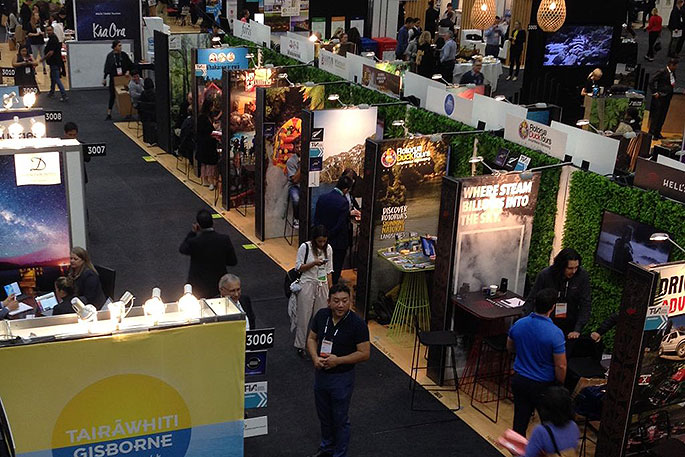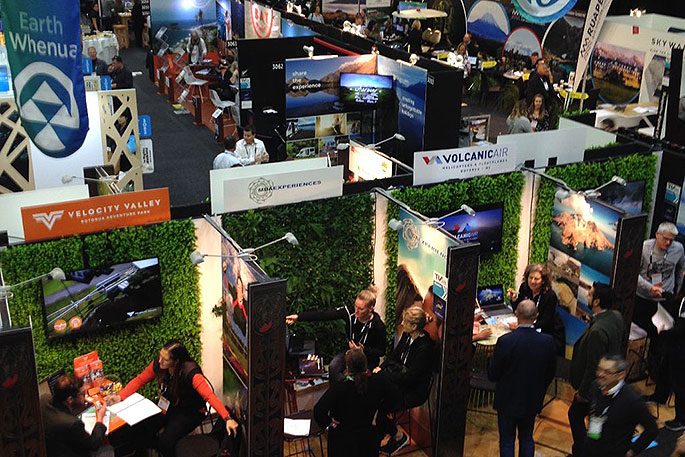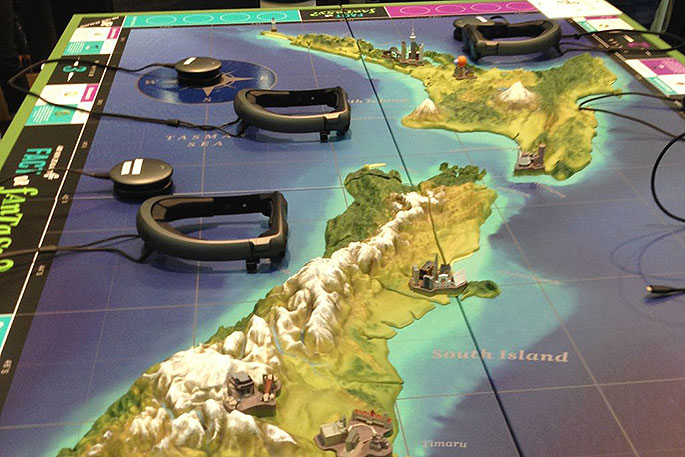It may be difficult compressing the impact of TRENZ Rotorua into a few words.
But we'll try.
This year's lasted four days. Some 1500 delegates of 300 international sellers in as many kiosks representing $39.1 billion accumulated over 40 years will disperse.
Rotorua, hotels and motels filled, have returned to normal. Delegates from everywhere, staff from anywhere and security guards exuding goodwill and cheer made the Rotorua Energy Events Centre hum, the kind of hum a tourist can experience in London at any time of any day.
All delegates had something to sell. More than 100 news media representatives had something to relate.
What were once expos are now trade shows. This trade show was different. Even Te Puia, long established as a tourism leader. When was I last through Te Puia, a Te Puia promoter asked? Um, close to three years ago – the British ambassador was here, then the President of Hungary. 'Well,” she smiled, 'You'll have to return – it is changing.”
Tikanga Maori was a strong thread in this conference – so, too, was ecotourism. A man named Brett from Nelson espoused the national cycling tracks. The busiest kiosks, each manned by two/three representatives, were it seemed the Rotorua slots the size of packing cases, for that is what they were to accommodate the visitors in the Rotorua Energy Events Centre.
Yet, open spaces did exist. Of which Air NZ had an advantage.
Its crew showcased an interactive. Jessica, who like everybody retained good humour (it was a seller's market after all), inveigled this correspondent to take part in the carrier's inter-active pursuit.
'Geopoly?” I offered lightly after Jessica outlined the kernel of the game.
Over an impressive papier mâché outline of a map of New Zealand, with mountains like knobs on apple crumble (it really was artistic) Jessica said the idea of the game was to answer questions thrown up in a mobile 3-D headset. A kiwi asked the questions as it danced before your eyes.
As you went up and down the country, the head set pictured a sperm whale diving under and over the South Island. While it leapt before you, a voice through an ear piece asked questions – an eerie if enlightening experience.
Do the whales dive two miles deep off the Kaikoura Coast, the area I know as Crayfish Flat? Yes, was the answer, which could have extended by the additional knowledge they dived so deep to catch squid.
The inter-active is a wip, a work in progress, Jessica indicates.
Air NZ had been working on refining it for, um, close to two years. In time, it will find its way in flight for passengers. Presently, it was on trial. Geopoly, then? Maybe, had someone else thought of it.
The physical map was interesting, too. Representations of tall buildings in Auckland; geysers in Rotorua; the Beehive and environs in Wellington; construction of once broken buildings in Christchurch; Queenstown – key struts in the NZ tourism roundabout.
Tradition has not been forgotten, either.
Pam McGrath, of the Buried Village, told us her son and daughter in law had returned home from overseas to run the business, to keep it in the family a tradition of five generations I think she said.
Like visitors who travel to, say, Ypres in Belgium each day, arsenal buried deep in the paddocks ploughed and reploughed keep rising to the surface. On the day we visited a grenade, caked by newly dug soil, was a reminder of the barbaric conflict WW1 100 years earlier.
So it is at the Buried Village, the focal point of the calamitous Mt Tarawera eruption of 1856 which buried not only a village but the Pink and White Terraces, often recognised as the eighth wonder of the world.
For many years, objects buried by the Tarawera eruption and which have resurfaced offer similar reminders of the oil paintings rendered by artists of the day, their interpretations drawn from those who survived the experience.
Today, though, in what was their sole preserve then, like the geyser at Whakarewarewa, the magic of myth at Ohinemutu, where Gilbert Mair is the only European or Pakeha buried at Muruika Cemetery, competition has increased.
 An overview of kiosks from around New Zealand.
An overview of kiosks from around New Zealand.
And as you looked to compare the old with new in tourism in New Zealand, the established order with innovation after innovation, ecotourism against adventure tourism, market dominance against market share it was difficult to pick a leader.
Each of 1500 delegates occupying 300 tourism kiosks could claim success in this $39.1b industry.




0 comments
Leave a Comment
You must be logged in to make a comment.